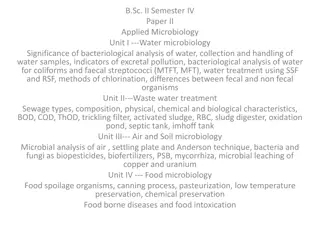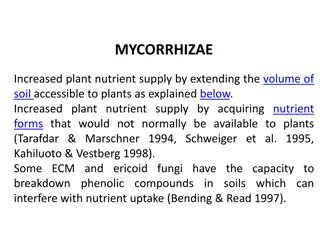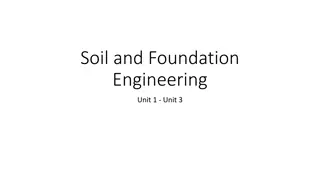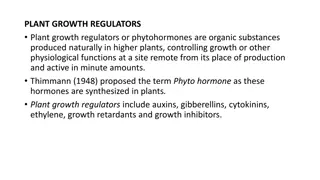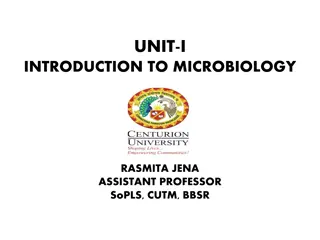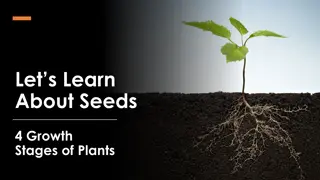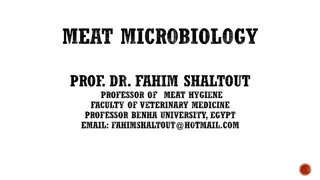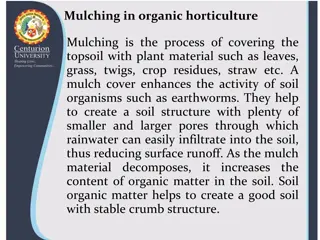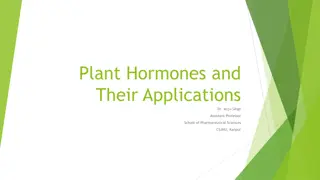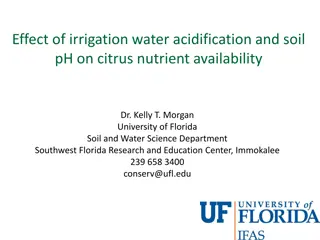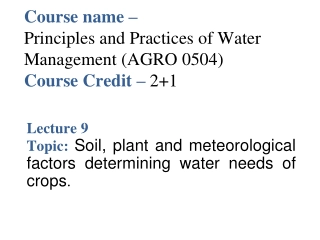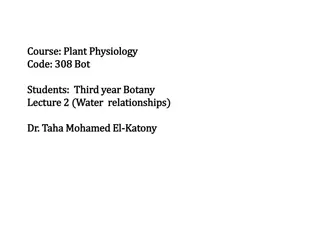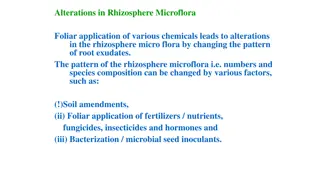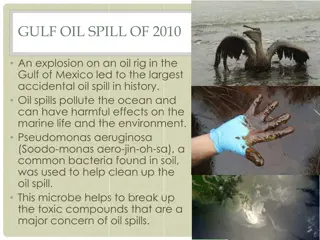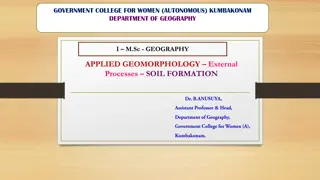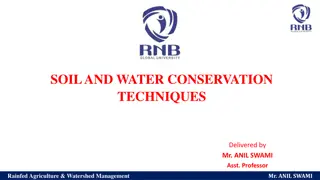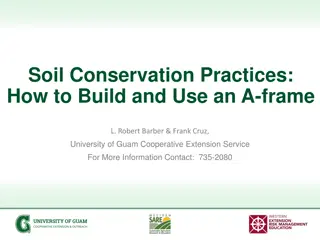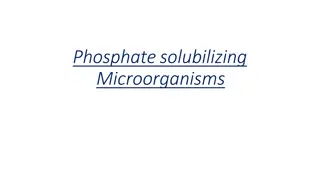Understanding Soil Microbiology and Its Impact on Plant Growth
Soil microbiology is a branch of science that focuses on studying soil microorganisms and their activities, which play a crucial role in supporting plant life. Soil consists of organic and inorganic matter, water, and living organisms that interact in complex ways to influence plant growth and nutrient availability. Understanding the components and dynamics of soil is essential for sustainable agriculture and ecosystem health.
Download Presentation

Please find below an Image/Link to download the presentation.
The content on the website is provided AS IS for your information and personal use only. It may not be sold, licensed, or shared on other websites without obtaining consent from the author. Download presentation by click this link. If you encounter any issues during the download, it is possible that the publisher has removed the file from their server.
E N D
Presentation Transcript
Soil Microbiology & soil in view of Microbiology .
Soil Microbiology Definition: It is branch of science/microbiology which deals with study of soil microorganisms and their activities in the soil. Soil: It is the outer, loose material of earth s surface which is distinctly different from the underlying Bedrock and the region which support plant life. Agriculturally, soil is the region which supports the plant life by providing mechanical support and nutrients required for growth. From the microbiologist view point, soil is one of the most dynamic sites of biological interactions in the nature.
It is the region where most of the physical, biological and biochemical reactions related to decomposition of organic weathering of parent rock take place. Components of Soil: Soil is an admixture components viz. organic matter, mineral matter, soil-air, soil microorganisms/living amount/ proposition of these components varies with locality and climate. of five major water organisms. and soil The
1- Mineral / Inorganic Matter: It is derived from parent rocks/bed rocks through decomposition, disintegration and weathering process. Different types of inorganic compounds containing various minerals are present in soil. Amongst them the dominant minerals Aluminum and iron and others like Carbon, Calcium Potassium, Manganese, Sodium, Sulphur, Phosphorus etc. are in trace amount. The proportion of mineral matter in soil is slightly less than half of the total volume of the soil. are Silicon,
2.Organic matter/components: Derived from organic residues of plants and animals added in the soil. Organic matter serves not only as a source of food for microorganisms but also supplies energy for the vital processes of metabolism which are characteristics of all living organisms. Organic matter in the soil is the potential source of N, P and S for plant decomposition of organic matter releases the unavailable nutrients in available form. The proportion of organic matter in the soil ranges from 3-6 % of the total volume of soil. growth. Microbial
3. Soil Water: The amount of water present in soil varies considerably. Soil water comes from rain, snow, dew or irrigation. Soil water serves as a solvent and carrier of nutrients for the plant growth. The inhabiting in the soil also require water for their metabolic activities. Soil water thus, indirectly affects through its effects microorganisms. Percentage of soil-water is 25% total volume of soil. microorganisms plant on growth soil and
4.Soil air (Soil gases): A part of the soil volume which is not occupied by soil particles i.e. pore spaces are filled partly with soil water and partly with soil air. These two components (water & air) together only accounts for approximately half the soil's volume. Compared with atmospheric air, soil is lower in oxygen and higher in carbon dioxide, because CO2 is continuous microorganisms during the process of decomposition of organic matter. Soil air atmosphere and contains nitrogen, oxygen Co2 and water vapor (CO2 > oxygen). Co2 in soil air (0.3- 1.0%) is more than atmospheric air (0.03%). Soil aeration plays important role in plant growth, microbial population, and microbial activities in the soil. recycled by the comes from external
5.Soil microorganisms: Soil is an excellent culture media for the growth and development of various microorganisms. Soil is not an inert static material but a medium pulsating with life. Soil is now believed to be dynamic or living system. Soil contains several distinct groups of microorganisms and amongst them bacteria, fungi, actinomycetes, algae, protozoa and viruses are the most important. But bacteria are more numerous than any other kinds of microorganisms. Microorganisms form a very small fraction of the soil mass and occupy a volume of less than one percent. In the upper layer of soil (top soil up to 10-30 cm depth i.e. Horizon A), the microbial population is very high which decreases with depth of soil. Each organisms or a group of organisms are responsible for a specific change /transformation in the soil.
The microorganisms in the soil is to make the soil fit for the growth & development of higher plants. Living organisms present in the soil are grouped into two categories as follows. 1. Soil flora (micro flora) e.g. Bacteria, fungi, Actinomycetes, Algae and 2. Soil fauna (micro fauna) animal like eg. Protozoa, Nematodes, earthworms, moles, ants, rodents . Relative proportion / percentage of various soil microorganisms are: Bacteria-aerobic (70%), anaerobic (13 %), Actinomycetes (13%), Fungi /molds (03 %) and others (Algae Protozoa viruses) 0.2-0.8 %. Soil organisms play key role in the nutrient transformations. final effect of various activities of




